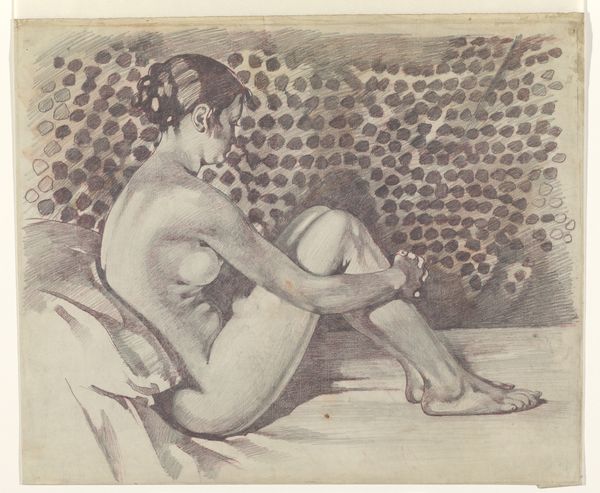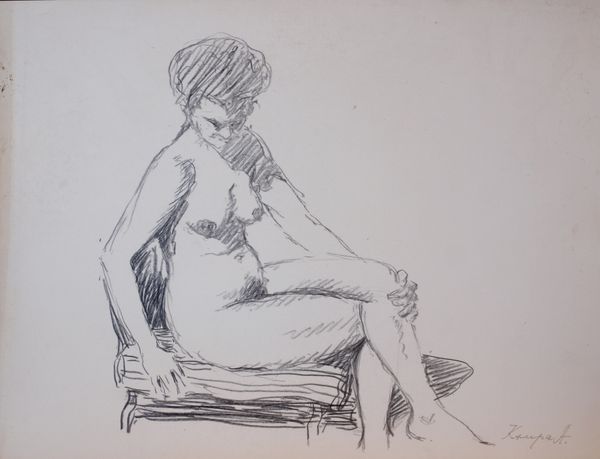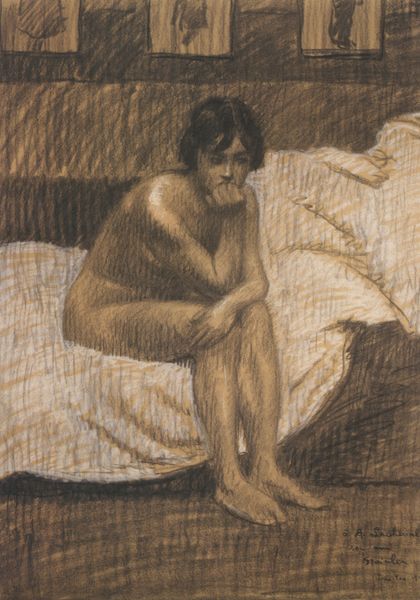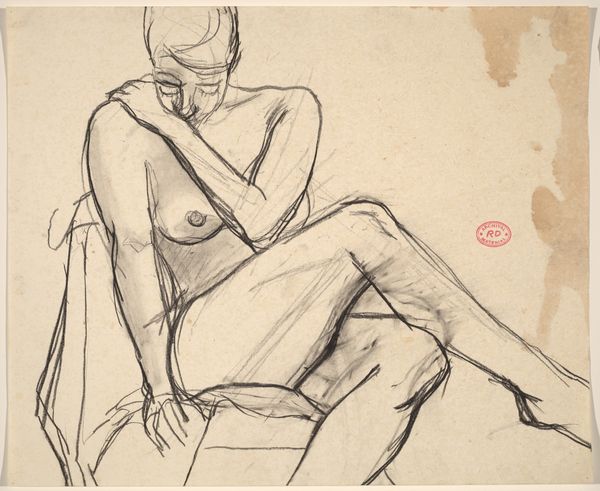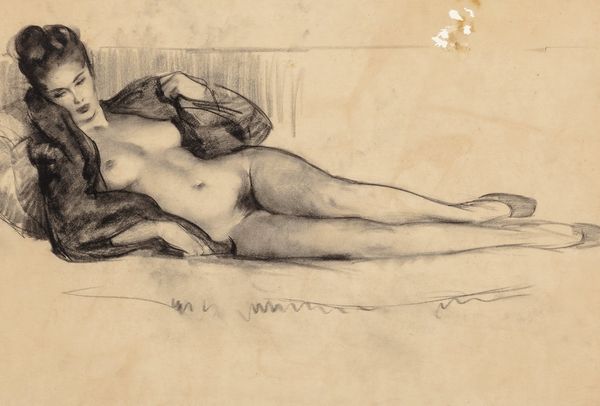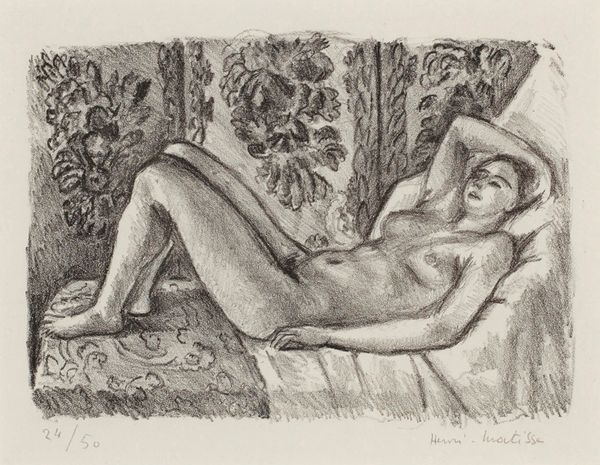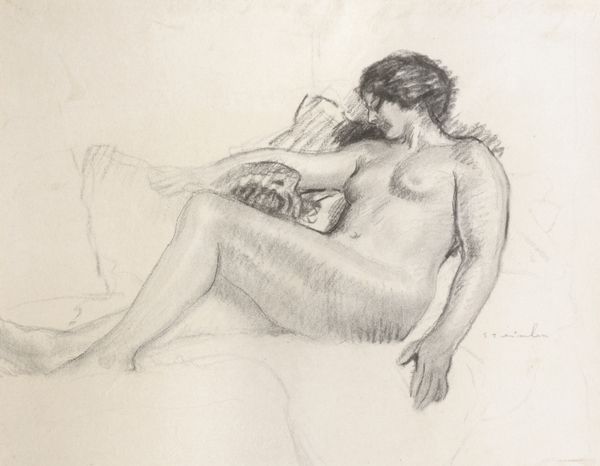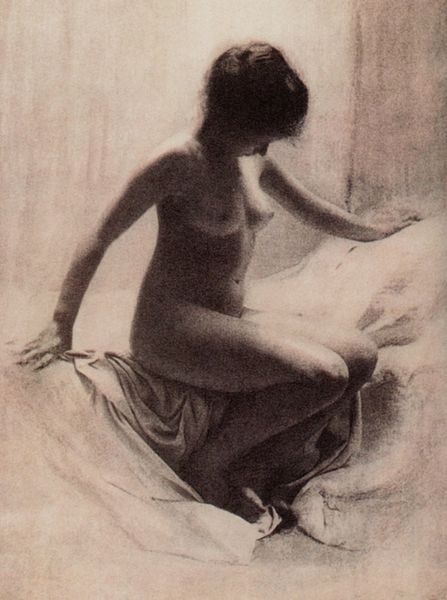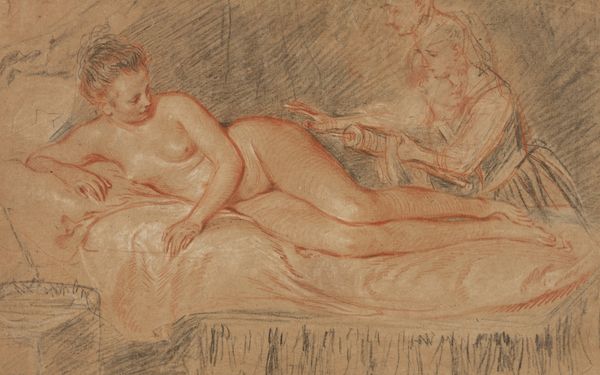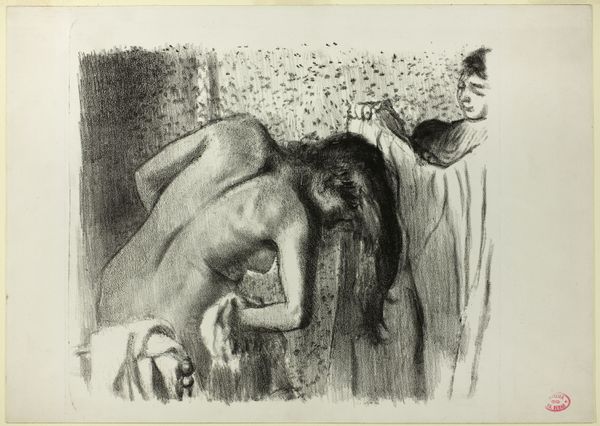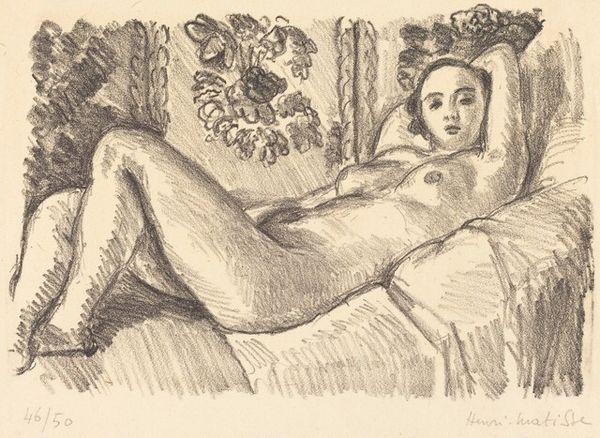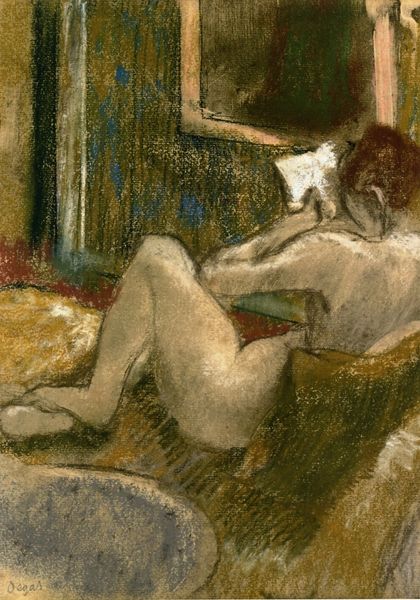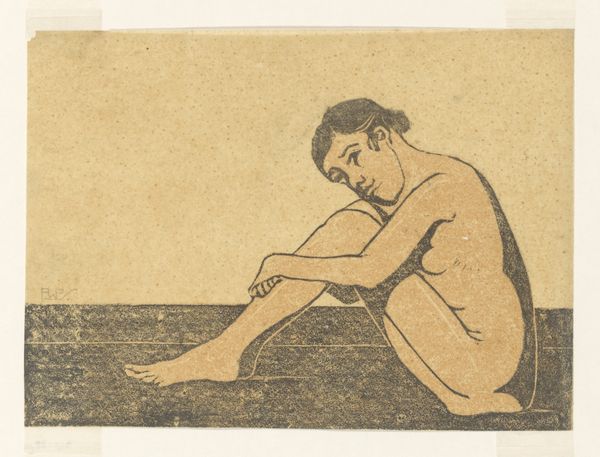
Copyright: Public domain
Curator: Right, let’s take a look at Thèophile Alexandre Steinlen’s, Seated Nude from Behind, made in 1905 using charcoal. What’s your immediate reaction to it? Editor: A stillness, a quiet introspection, the way she's facing away... it feels like a very private moment. Almost melancholy, but very beautiful in its vulnerability. Curator: It’s interesting you say that, because Steinlen was working at a time where representations of the nude were often highly sexualized or idealized. Instead, here the materiality, particularly the charcoal medium, combined with the softness of the pillows, offers something far less exploitative. How do you see the artistic process reflecting social values? Editor: I think it strips away artifice. With charcoal, there's no hiding. It's raw, immediate. This lends an intimacy, an immediacy of the female experience, especially when compared to some of the overly polished nudes we see from the period. There is almost a feeling of life drawing meeting lived reality. Curator: Precisely. The use of readily available, inexpensive charcoal allows us to consider a democratizing impulse. Was Steinlen intentionally resisting the dominant narrative by choosing such an accessible medium? How does it align with his socialist leanings, his engagement with working-class life? Editor: That is a good question, though I do feel I understand why he did this. As I'm looking at it now, I feel there’s a quiet dignity there too, something respectful. Not the theatrical "come hither" pose you'd often see in academic paintings. The body isn’t being presented; it's simply *being*. I would also say that as an artist you sometimes pick what is to hand. He did after all draw posters and advertisements, not just "high art." Curator: Absolutely, and perhaps that points to an erasure of the rigid boundaries between high art and craft. What does this subject mean to you? Editor: It resonates because it’s about being present with oneself. Away from others. As if the day has been done and is ending, a relaxing of everything, which as an artist I understand implicitly. Curator: So, what started as a commentary on artistic processes reveals how an individual's interpretation shapes our understanding of historical art. Fascinating. Editor: Exactly. It is that interplay of artist, material, and interpretation that breathes continued life into the art, more than 100 years after its making.
Comments
No comments
Be the first to comment and join the conversation on the ultimate creative platform.
